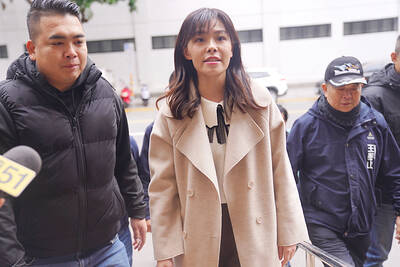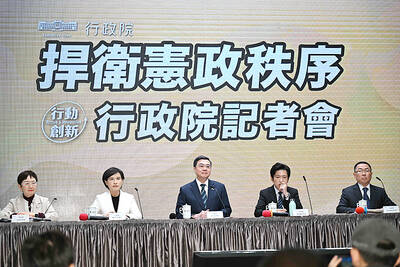As if in a shadow play of a major Hollywood premiere, photographers pressed up to a procession of film stars strolling into a theater aglow with hype and klieg lights. Keanu Reeves chatted on camera with Access Hollywood and MTV reporters. Will Smith and his wife, the actress Jada Pinkett Smith, waved to onlookers. Carrie-Anne Moss and Laurence Fishburne glittered on a black carpet ordered for the occasion.
The event at Warner Brothers Studios was a sort of coming-out party for Enter the Matrix. No, it's not one of the long-anticipated sequels to The Matrix, the cyber-chic 1999 thriller. It is, instead, a video game.
With a production cost that some industry experts estimate at as much as US$20 million, it is likely to be the most expensive video game yet made. More importantly, the game, laced with an hour of new Matrix film scenes and megabytes of cinematic tricks, represents the closest collaboration so far between the converging orbits of moviemaking and game production in an entertainment universe that is finding new profits, partnerships and possibilities in ever more sophisticated digital technologies.
The game's 244-page equivalent of a shooting script was written by Larry and Andy Wachowski, the brothers who wrote and directed The Matrix for Warner Brothers Pictures as well as two sequels being readied for release this year. (The game's release by Shiny Entertainment is to coincide with the May 15 opening of the first sequel, The Matrix Reloaded.) Similarly, the films' set and custom designers and much of their departments did double duty for the game, as did the movies' famed Hong Kong fight choreographer, Yuen Wo Ping, and the films' lead actors.
"We had a notion to take the stars of the movies and have them play supportive roles in the video game and tell a story that is a companion story to the movies,'" said Joel Silver, the films' producer. Blending the productions, he said, became essential to maintaining the quality and requirements of the "content-driven" projects.
"There are scenes that start in the video game and will complete the movie," he said, noting that the game was conceived to "feel like it's a part and experience of the movie." Some of the plot lines intersect, and one of the player's missions is to get a character to a location pivotal to the story in Reloaded.
Bruno Bonnell, chairman and chief executive of Infogrames, which recently acquired Shiny Entertainment, calls the phenomenon "a revolution in interactive entertainment."
Of her months of work on both the Matrix sequels and the game as the tough hovercraft pilot known as Niobe, Pinkett Smith said, "It's all one project."
Some of the bigger video game developers, like Activision and Electronic Arts, have also been quick to capitalize on securing licenses to movies, gambling millions of dollars on whether movie premises and characters can make top-selling games.
This year, besides Enter the Matrix, game enthusiasts can expect a slew of movie-related video games that are being developed with the increasingly close cooperation of the moviemakers and actors.
Even Disney's Piglet's Big Movie, due in theaters March 21, is being accompanied by a video game, Piglet's Big Game, made by Gotham Games. It took advantage of Disney's willingness to help blur the line between movie and game by giving both the same look, feel and vocals, said Greg Ryan, general manager of Gotham Games.
Last year, Activision, with games like Spider-Man: The Movie, and Electronic Arts, with Lord of the Rings: The Two Towers, struck gold with movie-to-game projects. Both games, executives for the companies note, were created with unusually high access to the films' makers, including having the movies' actors reprise their roles specifically for the games.
And at an average retail price of US$50 a game, the economics of translating a blockbuster movie into a game that could sell in the millions is attractive, many gamemakers and moviemakers note.
"I think what is going on is that everyone has realized that we are going after the same target audience," said Kathy Vrabeck, an executive vice president at Activision, referring to young males. "I'm not surprised to see more convergence of movies and video games, bringing that experience into the interactive realm where they can continue that experience for hours and hours."
Neil Young, an Electronic Arts vice president in charge of production for the company's Lord of the Rings game franchise, said he had video conference calls from his office in Redwood City, California, with Peter Jackson, director of the film trilogy.
"It is important to keep him in the loop," Young said. "We're trying to understand the language of the film and adopt and retain its core essence, but diverge in ways that are right for the game medium."
Trying to capture box-office lightning in a game cartridge is not new. Some of the first mass-market video games to emerge in the late 1970s were inspired by Star Wars.
But video games based on popular films have often disappointed gamers. For years, they tended to be marketing afterthoughts or blatant money grabs churned out with little more imagination than it took to flood the market with movie-themed lunch boxes and T-shirts, critics note.
Only in recent years, with explosively powerful microprocessors and 3-D graphics chips, as well as the immense popularity of consoles like PlayStation 2, Xbox and GameCube, have game technologies matured enough to begin to approach film-like qualities, said David Perry, president of Shiny Entertainment.
"And we're still in our infancy," he added.

The US government has signed defense cooperation agreements with Japan and the Philippines to boost the deterrence capabilities of countries in the first island chain, a report by the National Security Bureau (NSB) showed. The main countries on the first island chain include the two nations and Taiwan. The bureau is to present the report at a meeting of the legislature’s Foreign Affairs and National Defense Committee tomorrow. The US military has deployed Typhon missile systems to Japan’s Yamaguchi Prefecture and Zambales province in the Philippines during their joint military exercises. It has also installed NMESIS anti-ship systems in Japan’s Okinawa

‘WIN-WIN’: The Philippines, and central and eastern European countries are important potential drone cooperation partners, Minister of Foreign Affairs Lin Chia-lung said Minister of Foreign Affairs Lin Chia-lung (林佳龍) in an interview published yesterday confirmed that there are joint ventures between Taiwan and Poland in the drone industry. Lin made the remark in an exclusive interview with the Chinese-language Liberty Times (the Taipei Times’ sister paper). The government-backed Taiwan Excellence Drone International Business Opportunities Alliance and the Polish Chamber of Unmanned Systems on Wednesday last week signed a memorandum of understanding in Poland to develop a “non-China” supply chain for drones and work together on key technologies. Asked if Taiwan prioritized Poland among central and eastern European countries in drone collaboration, Lin

BACK TO WORK? Prosecutors said they are considering filing an appeal, while the Hsinchu City Government said it has applied for Ann Kao’s reinstatement as mayor The High Court yesterday found suspended Hsinchu mayor Ann Kao (高虹安) not guilty of embezzling assistant fees, reducing her sentence to six months in prison commutable to a fine from seven years and four months. The verdict acquitted Kao of the corruption charge, but found her guilty of causing a public official to commit document forgery. The High Prosecutors’ Office said it is reviewing the ruling and considering whether to file an appeal. The Taipei District Court in July last year sentenced Kao to seven years and four months in prison, along with a four-year deprivation of civil rights, for contravening the Anti-Corruption

NO CONFIDENCE MOTION? The premier said that being toppled by the legislature for defending the Constitution would be a democratic badge of honor for him Premier Cho Jung-tai (卓榮泰) yesterday announced that the Cabinet would not countersign the amendments to the local revenue-sharing law passed by the Legislative Yuan last month. Cho said the decision not to countersign the amendments to the Act Governing the Allocation of Government Revenues and Expenditures (財政收支劃分法) was made in accordance with the Constitution. “The decision aims to safeguard our Constitution,” he said. The Constitution stipulates the president shall, in accordance with law, promulgate laws and issue mandates with the countersignature of the head of the Executive Yuan, or with the countersignatures of both the head of the Executive Yuan and ministers or